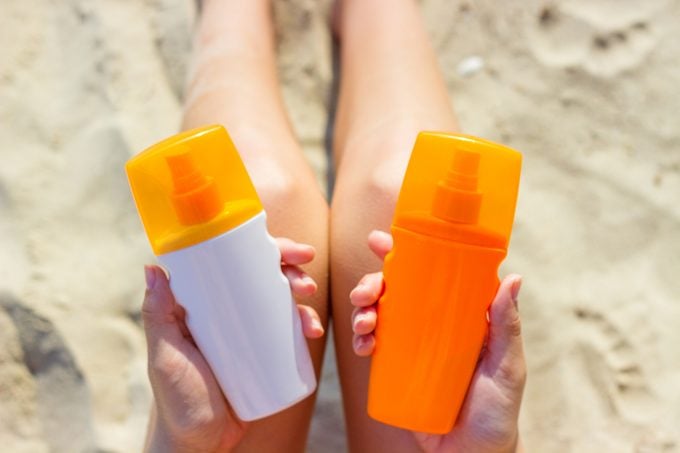Whether you’re heading to the beach or just running errands, protecting your skin from the sun is essential. But with so many products on the market, it’s easy to wonder: Sunscreen vs sunblock — what’s the difference? And more importantly, which one should you be using?
Let’s break down the science, the labels, and the skin benefits so you can make the best choice for your skincare routine.
Are Sunscreen and Sunblock the Same?
Short answer: No, they are not the same — although they’re often used interchangeably.
| Feature | Sunscreen | Sunblock |
| Type of Protection | Chemical (absorbs UV rays) | Physical (blocks UV rays) |
| Texture | Lightweight, absorbs into skin | Thicker, sits on top of skin |
| Common Ingredients | Avobenzone, oxybenzone, octinoxate | Zinc oxide, titanium dioxide |
| Ideal For | Daily use, normal/oily skin | Sensitive skin, outdoor sports |
How They Work
- Sunscreen absorbs the sun’s harmful rays (UVA and UVB) before they can damage your skin. It’s a chemical defense that usually feels lighter and blends in more easily.
- Sunblock acts like a physical shield, literally blocking the rays by sitting on the surface of your skin. It’s often more visible (think white cast) but great for sensitive skin and children.
The Real Difference Between Sunscreen and Sunblock
- How they protect: Sunscreen filters UV rays; sunblock reflects them.
- Skin compatibility: Sunblock is gentler and better for people with eczema or acne-prone skin.
- Cosmetic feel: Sunscreens tend to be more wearable under makeup; sunblocks are thicker.
- Duration: Both need reapplication every 2 hours, especially after swimming or sweating.
Sunscreen vs No Sunscreen
Skipping sunscreen altogether? Here’s what happens:
- UV exposure can lead to sunburn, premature aging, hyperpigmentation, and even skin cancer.
- Even on cloudy days, up to 80% of UV rays can reach your skin.
- Using any form of sun protection is better than none — but understanding the difference between sunscreen and sunblock helps you choose smarter.
Difference Between UV and SPF
- UV stands for ultraviolet rays — UVA (aging rays) and UVB (burning rays).
- SPF stands for Sun Protection Factor — it measures how long the product protects you from UVB.
For example, SPF 30 means you can stay in the sun 30 times longer than without protection. But SPF doesn’t measure UVA protection — for that, look for broad-spectrum on the label.
Should I Use Sunblock or Sunscreen?
It depends on:
- Skin type – Sunblock is better for sensitive skin
- Daily use vs outdoor activity – Sunscreen is great for daily wear; sunblock is ideal for long sun exposure
- Makeup routine – Sunscreen blends better under foundation
Dermatologist tip: You can even layer them — use a lightweight sunscreen with a dab of sunblock on high-exposure areas like your nose or cheeks.
Final Thoughts
Choosing between sunscreen vs sunblock doesn’t have to be confusing. Both serve the same purpose — protecting your skin from harmful UV rays — but they go about it differently.
Think of sunscreen as your daily lightweight defender and sunblock as your weekend warrior.
Either way, your skin will thank you for showing up with the right shield.
